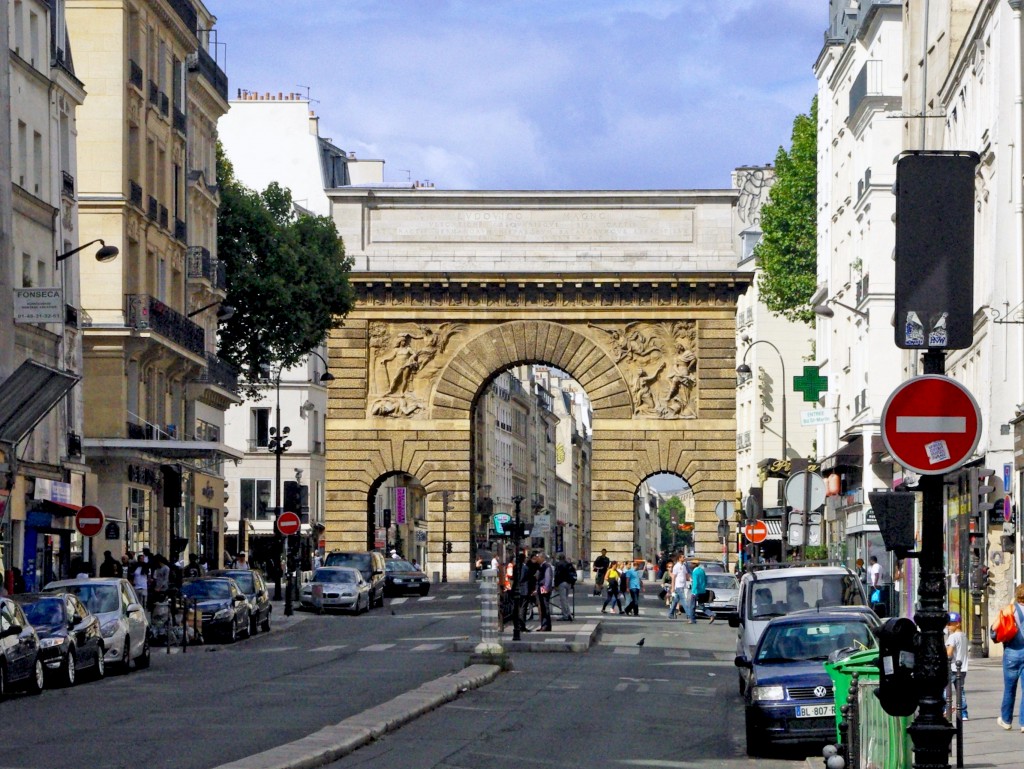The triumphal arch of Porte Saint-Martin is situated in the 10th arrondissement of Paris. Built in the 17th century it commemorates Louis XIV’s victories on the Rhine and in Franche-Comté. Not far from the Porte Saint-Denis, the little known gateway is one of the four triumphal arches found in Paris.
Porte Saint-Martin: a bit of history
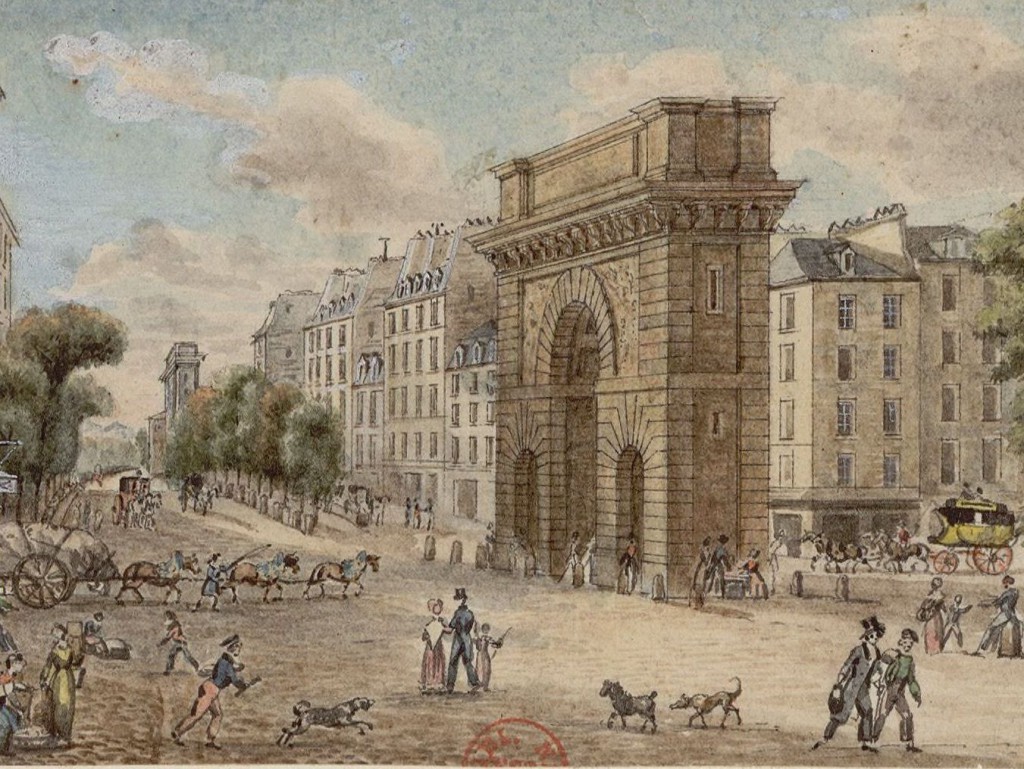
Porte Saint-Martin stands about 200 metres away from the Porte Saint-Denis. It takes its name from a former medieval gate which belonged to the city wall of Paris built by King Charles V in the 14th century.
By the 17th century, the city had greatly expanded and the rampart was replaced by a tax wall. The flat top of the rampart was transformed into a verdant promenade called boulevard. The fortified gates were dismantled and replaced by triumphal arches.
The Porte Saint-Martin was built in 1674 by architect Pierre Bullet, a student of François Blondel, the architect who built the neighbouring Porte Saint-Denis. It was Louis XIV himself who ordered its construction to serve as a monument to his victories in the Rhine and in Franche-Comté. However, the construction of the monument was funded by the City of Paris!
One of Paris’ four triumphal arches
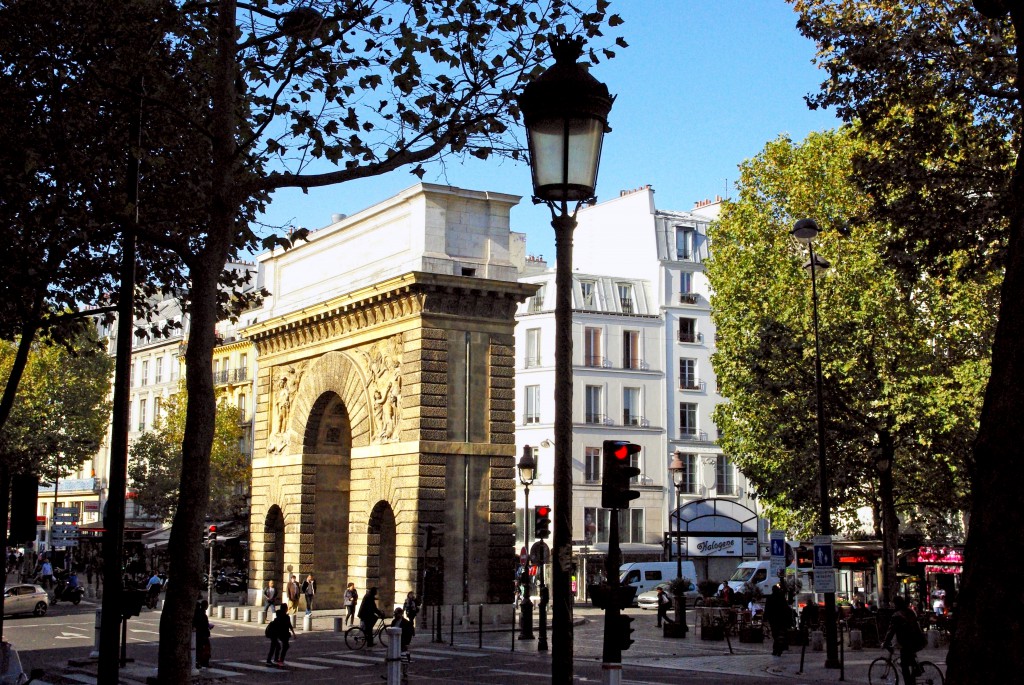
The Porte Saint-Martin was the second of the four triumphal arches in Paris to be built. The three others were the Arc de Triomphe du Carrousel, the Arc de Triomphe de l’Étoile, and the Porte Saint-Denis.
The Porte Saint-Martin was restored in 1988.
Description of the gate
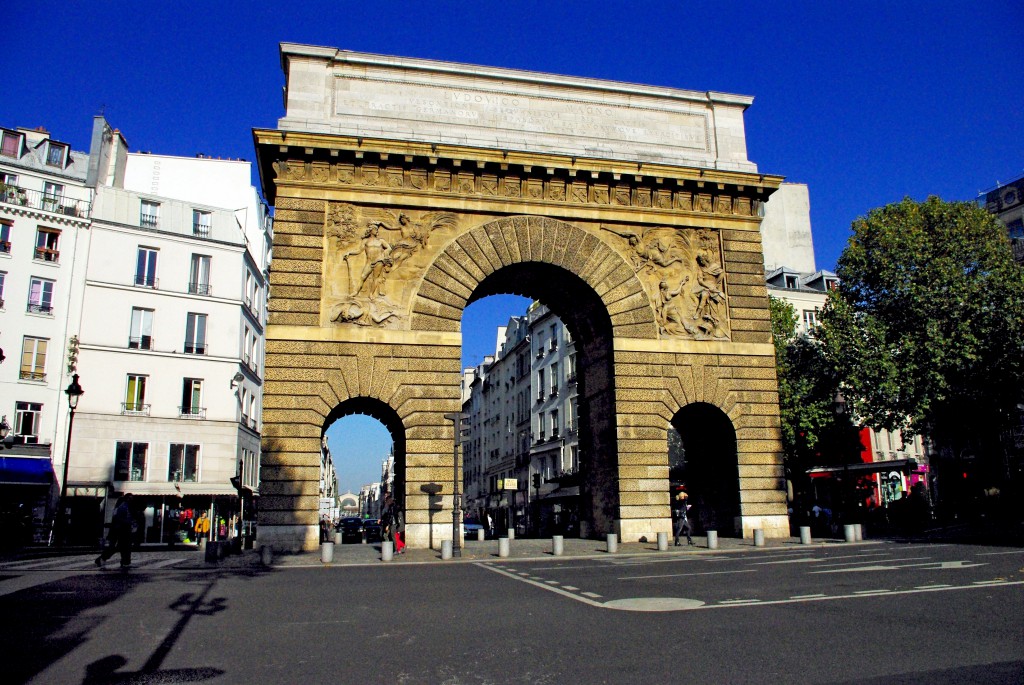
The triumphal arch of Porte Saint-Martin is smaller in size than the Porte Saint-Denis. The gateway is 18 metres high (compared to 24.65 m at the Porte Saint-Denis). As for many triumphal arches it was inspired by the Arch of Titus in Rome. The gate is pierced by a large central arch (5 m high) and by two smaller flanking openings for pedestrians (2.5 m high).
The rusticated structure was built in limestone and is crowned with a flat entablature in white marble.
Its spandrels contain four allegories in bas-reliefs:
- North side left: La Prise du Limbourg en 1675 (The Capture of Limbourg in 1675) by Pierre Legros I. It depicts a sitting woman next to a lion lying down.
- North side right: La Défaite des Allemands (The Defeat of the Germans) by Gaspard Marsy. Louis XIV as Mars is represented carrying the shield of France and pushing back a German eagle to protect a woman and an old man.
- South side left: La Rupture de la Triple Alliance (The Breaking of the Triple Alliance) by Étienne le Hongre. It shows Louis XIV as Hercules, partly nude, carrying his wig and holding a sledgehammer.
- South side right: La prise de Besançon (The Capture of Besançon) by Martin van den Bogaert. Louis XIV is overseen by Fame (la Renommée). He is standing in front of an olive tree and a palm tree, and receives the keys of the city from a woman kneeling down.
The entablature of the south façade bears a Latin inscription that reads: “To Louis the Great, for having vanquished the German, Spanish, and Dutch armies: the Dean of the Guild and the Aldermen of Paris.“
How to get there
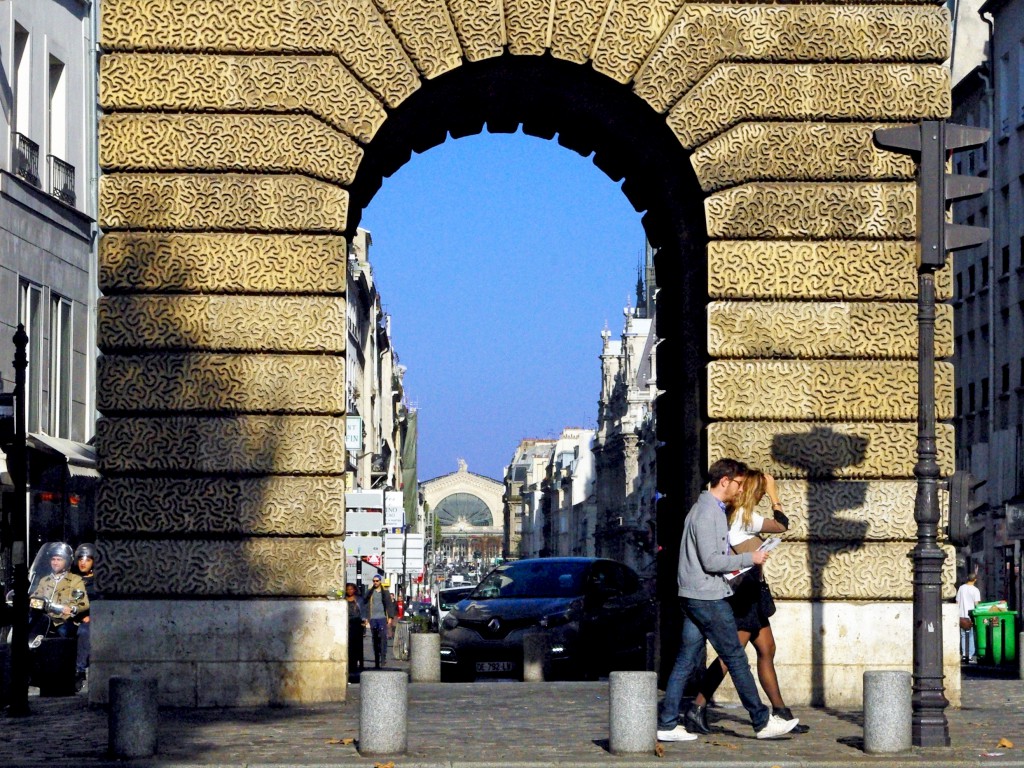
- Porte Saint-Martin is situated at a major crossroads where rue Saint-Martin changes to rue du Faubourg Saint-Martin and where boulevard Saint-Martin becomes boulevard Saint-Denis.
- The closest métro station is Strasbourg-Saint-Denis (lines 4, 8 and 9).
- Click on this link to open a google map for the location of Porte Saint-Martin in Paris.
- For a nice view of the gateway, place yourself at the crossroads of rue Saint-Martin with rue de Réaumur.
Like what you’ve read? Subscribe to our blog by adding your email address to the form below.

